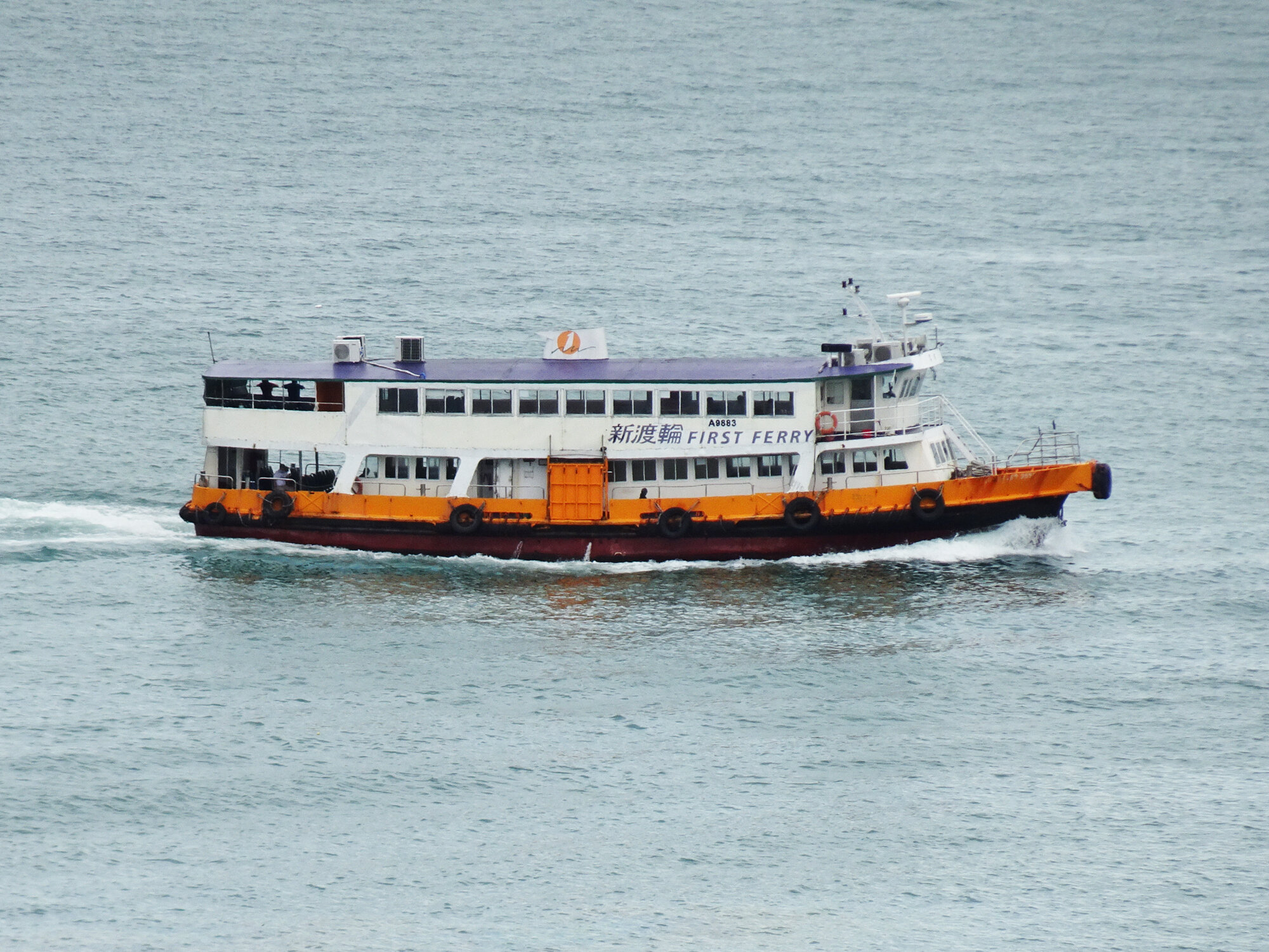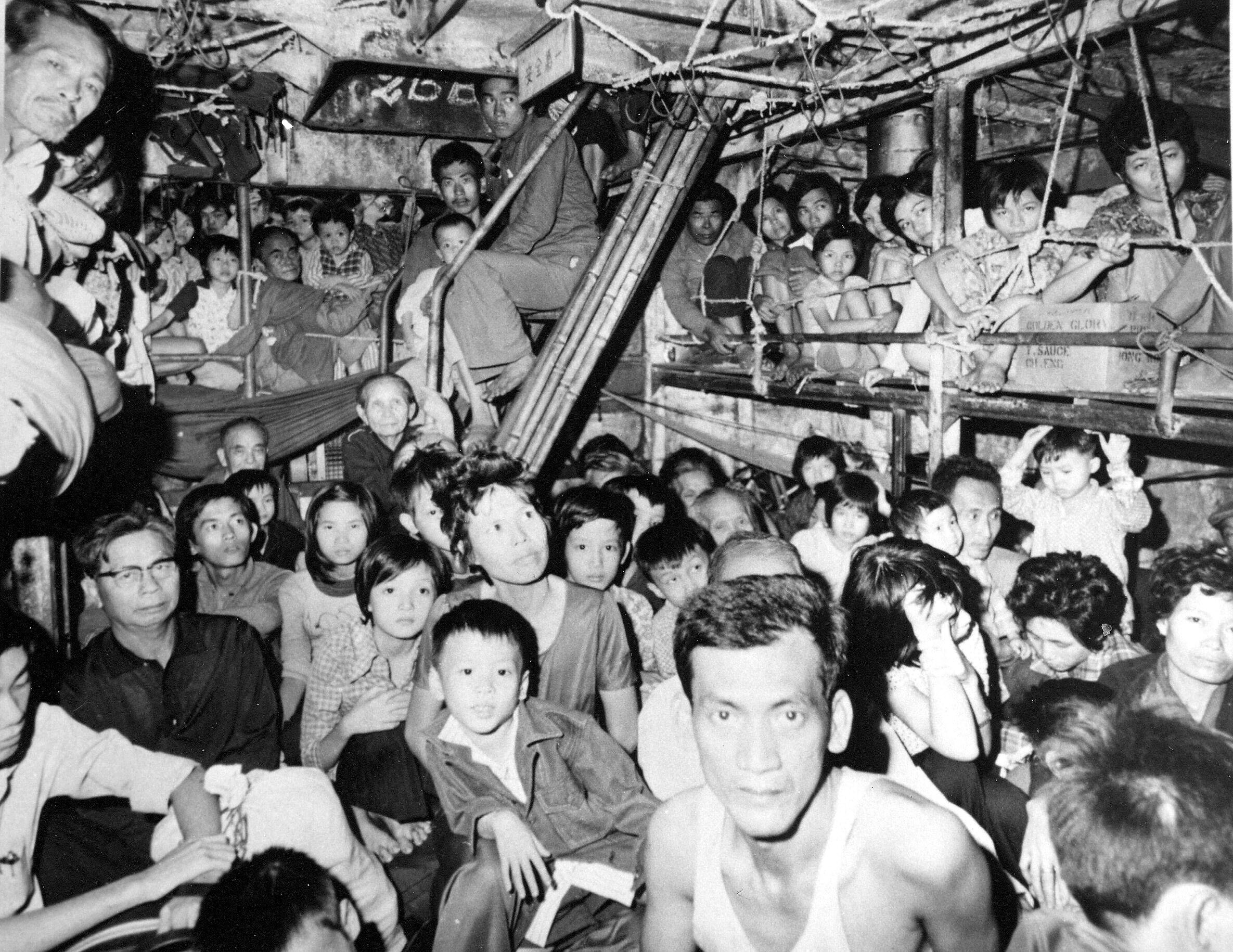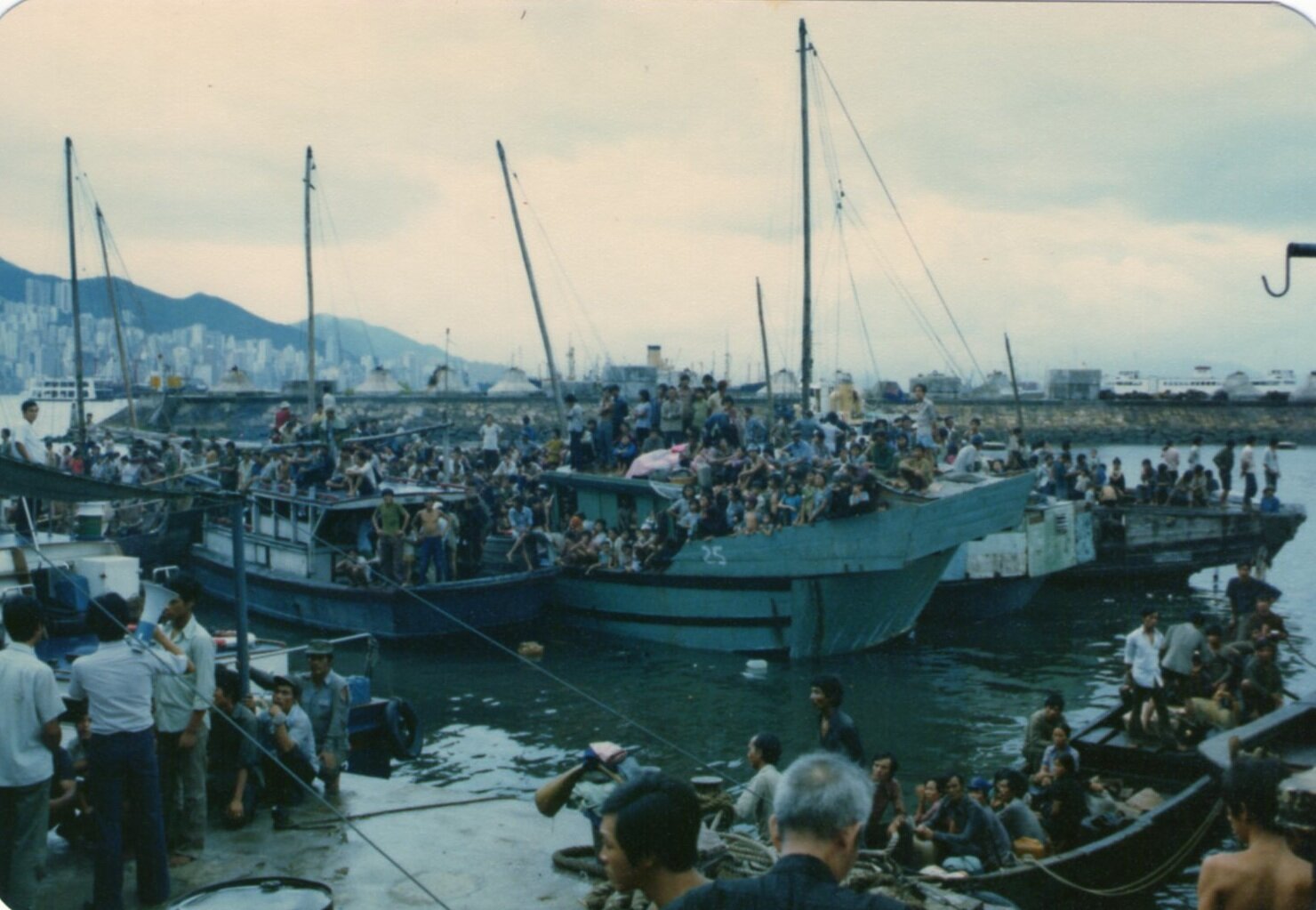街渡海運 Kaito Shipping
長洲為香港南端小島,明代時期已是繁盛的漁村。乾隆末年間,長洲已是中國華南地區的「銷鹽子埠」,即一個海鹽的集散地;附近島嶼的漁鹽皆運到長洲出售,海上貨運繁盛。嘉慶二十四年 (公曆1819年) ,長洲正式成為墟市被編入史册;與元朗墟、石湖墟、大埔墟等,同是香港開埠前 (公曆1842年) 的重要墟市。
Cheung Chau is a small island at the southern end of Hong Kong, and it was already a prosperous fishing village since Ming Dynasty. In the late Qianlong period, Cheung Chau was a "sales salt port" in southern China, that is, a distribution center for sea salt. Fishing salt from nearby islands was transported to Cheung Chau for sale, and sea freight business was prosperous. In the twenty-fourth year of Jiaqing Emperor (1819), Cheung Chau officially became a market and was included in the annals of history, together with Yuen Long Market, Shek Wu Market, and Tai Po Market, it was also an important market before the opening of Hong Kong (in 1842).
由於漁鹽一直是長洲的重要經濟支柱,故當時長洲灣内舟楫雲集,長洲有多艘街渡行駛華南沿海各地;如義泰安渡、公昌渡、人和泰渡等,主要運輸糧油鹽務。
Since fishing salt has always been an important economic pillar of Cheung Chau, there were many boats in Cheung Chau Bay at that time. There were many kaitos traveling along the coast of South China; such as Yitai Andu, Gongchangdu, Renhe Taidu, etc., which mainly transported grain, oil and salt. Service.
同治初年,清廷曾在島上設立關稅站,除肩負緝私課餉之責,亦監視被英人佔領的香港九龍的船艦進出。當時官府除運兵船外,還有海關船、抽厘船 (收税船)、緝私船、銅底船等進出巡視長洲。
In the early years of Tongzhi, the Qing government set up a customs station on the island. Apart from anti-smuggling class, it also monitor the entry and exit of ships in Kowloon, Hong Kong, occupied by the British. At that time, in addition to the troop transport ships, the government also had customs ships, tax-collecting ships, anti-smuggling ships, and copper-bottom ships patrol to Cheung Chau.
至十九世紀末,長洲已有同安、安順、公益、義泰四艘街渡,行走香港、澳門、廣州以及廣東沿海各地。其中有兩艘街渡,每日有兩班定時來往長洲至港島西營盤,行程約三小時。
By the end of the 19th century, Cheung Chau had four kaitos, namely Tongan, Anshun, Charity, and Yitai, traveling Hong Kong, Macau, Guangzhou and the coastal areas of Guangdong. Among them, there are two Kaito boats with two regular sailing daily between Cheung Chau and Sai Ying Pun on Hong Kong Island. The journey takes about three hours.
自1898年6月9日清廷與英國簽定《展拓香港界址專條》後,長洲歸英人管理。由於長洲位於澳門與香港水上之間,距離廣州、虎門等邑市亦不遠,故長洲灣內泊滿大小船艇。
On June 9, 1898, Qing Dynasty and the United Kingdom signed the "Exhibition and Extension of the Hong Kong Boundary Site", Cheung Chau was managed by the British. Since Cheung Chau is located in important spot between Macau and Hong Kong, and not far from Guangzhou, Humen and other cities, Cheung Chau Bay is full of boats.
據當時一位英國特委專員Stewart Lockhart於1898年10月撰寫的報告描述:「長洲是一個繁忙的地方,很多來往香港和澳門之間的蒸汽船,艇和帆船也會在長洲停留。」二十世紀初,已有蒸汽船來往港澳兩地,中途停在長洲上落客貨後,才繼續航程。而當時停泊的碼頭,就在現時北角咀附近。
According to a report written by the British Special Commissioner Stewart Lockhart in October 1898, “Cheung Chau is a busy port. Many boats travel among Macau and Hong Kong will also stop at Cheung Chau, includes steam ships, boats and sailing boats”. At the beginning of the twentieth century, there were steamboats travelling between Hong Kong and Macau, stopping at Cheung Chau to pick up and drop off passengers and cargo before continuing the voyage. The pier anchored at that time was near the current Pak Kok Tsui.
1898 年到訪長洲的英國戰艦 1898 British battleship visited in Cheung Chau
1950 年代前帆船 Sailing Boat in 1950
二十世紀初至1940年代,雖然每日有街渡行駛港島,然由於已有專線載客渡輪行駛港島,街渡亦漸由客貨兩用,改為專門載貨。而當時的街渡碼頭,就在現時的公眾碼頭位置。戰後長洲有兩艘主要街渡長利及星有利,專門從港島西營盤運貨至長洲;每日定時午夜三時由長洲啟航,早上五時到達港島西環。此外還有大利街渡及一些貨艇載貨往來港島。
From the beginning of the twentieth century to the 1940s, kaito ran daily between Cheung Chau and Hong Kong Island, there were dedicated passenger ferries operating on Hong Kong Island, kaito gradually changed from both passenger and cargo to specialized cargo transportation route. At that time, the Kaito Wharf was located at the current public wharf. After the war, Cheung Chau had two main kaito operators, named Cheung Lee and Xing Yi, specializing in transporting cargo from Sai Ying Pun to Cheung Chau. They sail from Cheung Chau at 3 am daily and arrive at Sai Wan at 5 am. There are also Dali Kaito and some cargo boats carrying cargo to and from Hong Kong Island.
1970年代至今年中,長洲每日有兩艘街渡長安及大眾,來往長洲與九龍油麻地及香港西營盤。另有兩艘貨艇,每日亦有運載日用品到長洲,現時運載貨艇為志達及德利。
Since 1970s, Cheung Chau had two Kaito operators Chang An and Public operates daily between Cheung Chau and Yau Ma Tei, Kowloon and Sai Ying Pun, Hong Kong. Aside of Kaito, there are also two cargo boats that carry daily necessities to Cheung Chau, the current cargo boats are Zhida and Deli.
長洲為繁盛漁港,除住家艇外;自不免有載人載貨的小船或街渡,穿梭於漁船或各海灣間。以往載客小艇多用橹榣,泊於長洲灣主要渡頭。上世紀六七十代,機械的使用,載客艇漸次引用摩打推動;船速比前更快,航程也比前遠,且有小型載人街渡行走公眾碼頭與附近各海灣。
Cheung Chau is a prosperous fishing village, apart for living boats; inevitably there are boats or kaitos that carry people and cargo shuttle between fishing boats or islands. In the past, passenger boats mostly human rowed and berthed at the main ferry of Cheung Chau Bay. In last century 60s and 70s, with the use of machinery, passenger boats gradually used motor propulsion; the speed of the boat is faster, and the voyage journey also shorter than before. There are also small passenger kaito to operate between the public dock and nearby bays.
載貨艇除了裝載得更多魚獲外,還可在中途回程的漁船上交收,把魚獲運到香港各區漁港。現時街渡也應用於垃圾運輸船。
In addition to carrying more fish, cargo boats can also use to deliver the fish to fishing ports on their return journey. Now, kaito is also use in garbage transportation.
渡海小輪 Ferry
二十世紀初,由於長洲水上交通四通八達,來往省港澳的蒸汽船多途經長洲,視長洲為中途補給站。當時除街渡行駛各地外,還有街坊開辦用蒸汽推動的「火船仔」來往港島;而碼頭則設在長洲灣現時渡輪碼頭較南面,對正碼頭直街,不過沒有上蓋。
At the beginning of the twentieth century, Cheung Chau water transportation has extended in all directions. Steam boats travelling to and from the China provinces, Hong Kong and Macau all passed through Cheung Chau on many routes, Cheung Chau was regarded as a midway supply station. At that time, in addition to kaito traveling everywhere, there were also local resident operated steam-propelled "fire boats" running to and from Hong Kong Island. The uncovered pier was located in Cheung Chau Bay, south of the current ferry pier facing the pier main street.
1910年代蒸氣推動載人到香港的「火船仔」Steam-propelled "fire boats" in 1910s
至1930年代,新界小輪公司每日有三班「火船仔」來往長洲與香港;即早上六時、下午一時及五時半。「火船仔」名為「新洲渡輪」,1929年下水;船身長120呎,23.5呎闊。渡輪有兩層高,上層只載客,而下層則客貨兩用。「火船仔」可載客300人,船上有電燈及救生設備,在當時頗為先進。昔日長洲碼頭,早期也有人在街上打鑼提醒乘客預期上船。通常「頭鑼」會慢慢打,「二鑼」會加快節奏和頻率,「三鑼」則再加快,很有特色。
In the 1930s, the New Territories Ferry Company had three “fire boat” rides between Cheung Chau and Hong Kong every day, respectively 6 am, 1 pm and 5:30 pm. The “fire boat” launched in 1929 and named "Xinzhou Ferry", 120 feet long and 23.5 feet wide. The Xinzhou ferry is two stories ferry, the upper deck carries passengers, while the lower deck serves both passenger and cargo. The “fire boat” can carry up to 300 passengers and equipped with electric lights and lifesaving equipment, which was quite advance facility at the time. In the old days of Cheung Chau Pier, some people played gongs on the street to remind passengers on board to the ship. Usually the "1st gong" will be played slowly, the "2nd gong" will speed up the rhythm and frequency, and the "Last gong" will speed up again, which is very distinctive.
1938年11月7日油麻地小輪公司接辦長洲線,一度由三班加至五班,不過四十年代航班不穩定,日治時期曾一度停駛。四十年代,每日曾有4班渡海小輪由長洲開往香港;即上午三時及七時四十五分,下午四時及六時四十五分。而每日由香港開返長洲亦有四班,星期日則另加一班晚上九時三十分;每日四班即上午六時,下午二時、五時三十分及八時。航程約1時10分;頭等三毫半,二等二毫。
On 7 November 1938, the Yau Ma Tei Ferry Company took over the Cheung Chau Line, and increased daily frequency from three to five. However, the schedule was unstable in the 1940s, and it was temporarily suspended during the Japanese occupation. In the 1940s, there were 4 daily ferries running between Cheung Chau and Hong Kong: 3 am, 7:45 am, 4 pm and 6:45 pm. There are also four sails from Hong Kong back to Cheung Chau every day. There are an additional sail at 9.30pm on Sunday. Four sails a day at 6am, 2pm, 5:30 and 8pm. The voyage is about 1:10, first class fare at three and a half cents, second class fare at two cents.
至1950年代,油麻地小輪公司每日已有5班直航來往長洲與香港,後期還有4班迴航經梅窩坪洲至港島,假日還會加開航班。直航時間通常為一小時,回航時間為一小時半,而當時所泊的碼頭則在港島統一碼頭。七八十年代是油麻地小輪的黃金時期,那時班次更多,兩層高的小輪擴展為三層高;後期還加開水翼船及氣墊船,來往港島的時間更快。
By the 1950s, the Yau Ma Tei Ferry Company had five direct schedules daily travel between Cheung Chau and Hong Kong. Later, it was extended to four return route via Mui Wo and Peng Chau to Hong Kong Island, additional sails would be operated on holidays. The direct voyage time is usually one hour, the return voyage time is one and a half hour. The pier at the time was the United Pier on Hong Kong Island.
The 1970s and 1980s was the golden age of the Yau Ma Tei Ferry. At that time, it substantially increased daily ferry schedule s, and upgraded the two-story ferry to three-story ferry. Later, hydrofoil and hovercraft were also added, and much improved the travel time between Hong Kong and Island.
不過隨著海底隧道及地鐵等交通投入服務,渡輪業前景每況愈下;最終油麻地小輪於2000年結束長洲航線,改由新世界第一渡輪公司(新渡輪)接管。政府為確保渡輪公司可正常運作,每期 (三年)都有一筆特别協助措施的保助金資助渡輪公司。
With the commissioning of transportation, such as the Cross-Harbour tunnel and MTR, the ferry industry prospects are deteriorating. The Yau Ma Tei Ferry has ended the Cheung Chau route in 2000 and was taken over by New World First Ferry Company (NWFF). To ensure the normal operation of the ferry company, the government has a special assistance scheme to subsidize the ferry company every period (three years).
此外,在長洲及香港仔居民的長期要求下,另一條新航線由翠華船務(香港)有限公司從長洲開往香港仔,亦於2015年8月8日啓航,行程約一小時。每日有七班航班,假日則加開數班,以利居民及旅客。不過因載客量不足,已於2019年底起停航。
In addition, under the long-term request of the residents of Cheung Chau and Aberdeen, another new route from Cheung Chau to Aberdeen operated by Tsui Wah Shipping (Hong Kong) Co., Ltd. also set in service on August 8, 2015. The journey takes about one hour, there are seven sailings a day, and several additional schedules are operate on holidays to facilitate residents and passengers. However, due to low passenger usage capacity, Cheung Chau to Aberdeen route is closed in end 2019.
新世界渡輪船隊 New World First Ferry fleets
現時新渡輪是唯一提供長洲與香港海上交通的公司,每日提供四十餘班普通及快速航班服務,另提供多班横水渡行走長洲與大嶼山和坪洲。
At present, New World First Ferry is the only company that provides ferry transportation between Cheung Chau and Hong Kong. It’s now provides more than 40 ordinary and fast ferry sailings a day, NWFF also operates Inter-Island ferry services among Cheung Chau, Chi Ma Wan, Mui Wo Lantau and Peng Chau.
橫水渡穿梭長洲, 芝麻灣, 梅窩, 坪洲
Inter-Island ferry services among Cheung Chau, Chi Ma Wan, Mui Wo Lantau and Peng Chau.
Hui Fai Ching Basil moved to Cheung Chau with his mother when he was young, and it has been more than 50 years. In recent years, he has focused on researching the history, culture and environmental conservation of Cheung Chau Island.
許輝程年幼時隨母移居長洲,轉瞬已五十多年。近年專注研討長洲島上歷史文化及環境保育。
Facebook: Living Cheung Chau
































